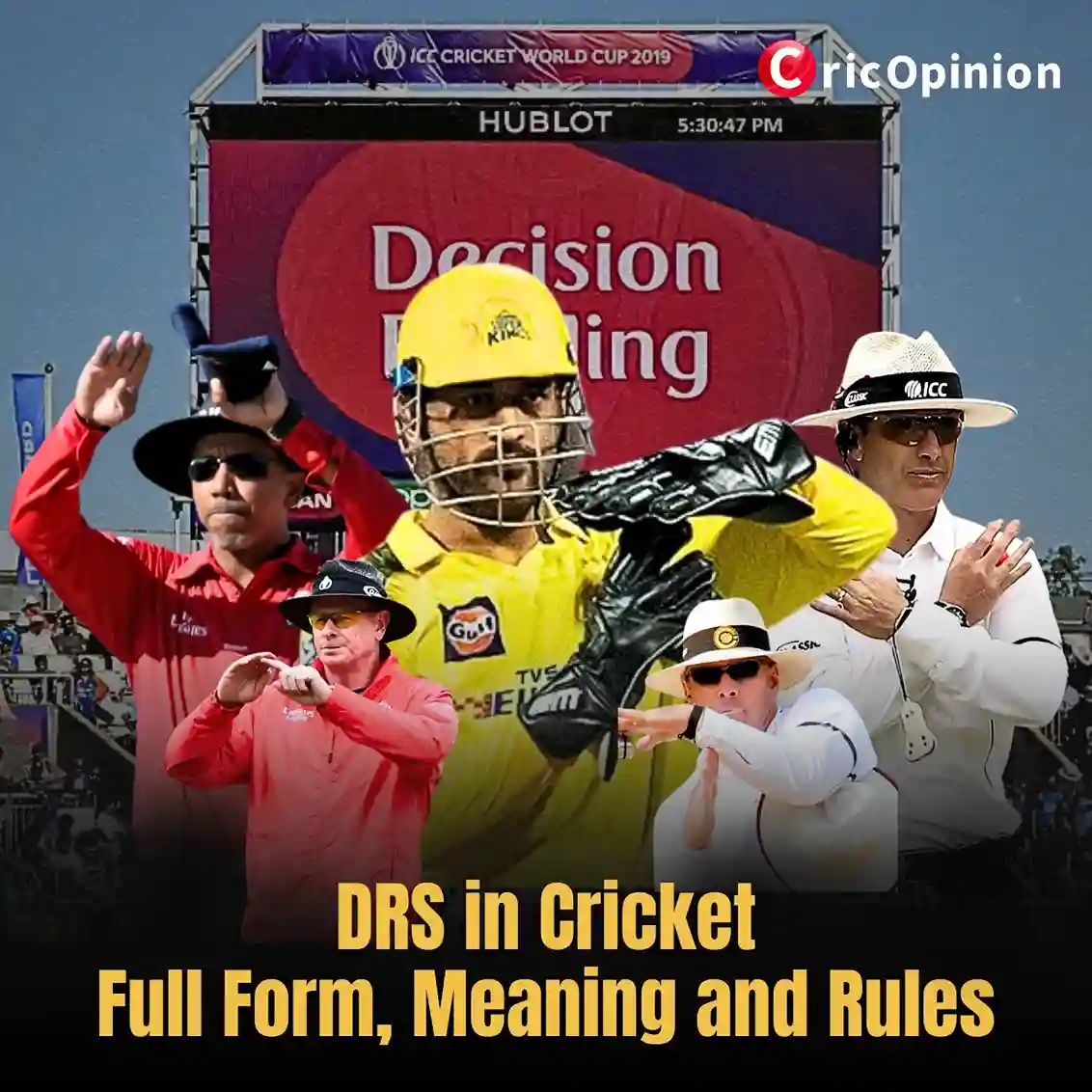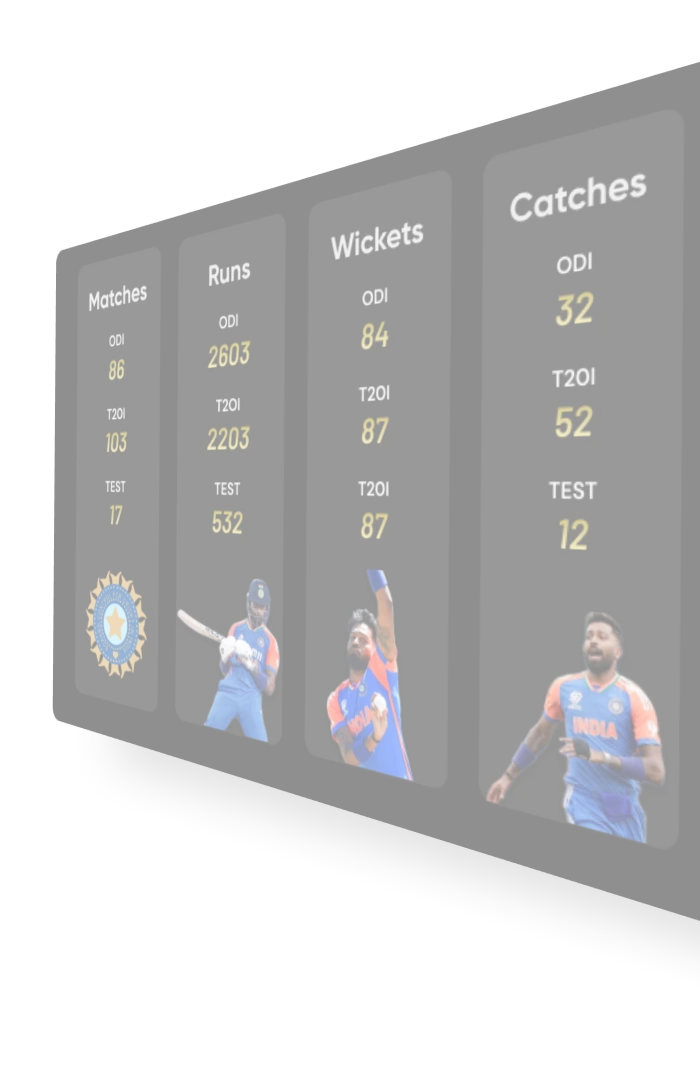
Table Of Contents
A cricket umpire makes almost 20 signals in a match. All these signals are crucial in deciding the result of the match. While the cricket umpire mostly makes signals from the field with the innovation in technology, a third umpire plays a crucial role in making different decisions as well. Here is a look at the different types of cricket umpire signals.
Out or dismissal of a batter is a common cricket umpire signal. The signal is made by the umpire only after an appeal has been made by the fielding team. However, the batter could also walk back to the pavilion in rare cases where they know they are out even before the umpire makes his signal.
The fielding team must appeal to the umpire to make a signal in their favor. If the umpire believes the batter is out then he signals the dismissal by raising their index finger and pointing towards the sky. However, if the umpire believes the batter to be ‘not out’, they must clearly say ‘Not Out’ and accompany the signal by shaking their head.
Moreover, both decisions can be further challenged using the Decision Review System (DRS) if the batter or the fielding team believes that the umpire has made the wrong decision.
No-ball is a type of illegal delivery bowled by the bowler which could often prove to be costly, especially in white-ball cricket. There are multiple reasons for an umpire to call a delivery no-ball. Some of the most common reasons for a no-ball are:
Both the on-field cricket umpire can signal a no-ball depending on the reason. The signal is made by the umpire by signaling with the hand stretched wide. In recent times, the TV Umpire or the third umpire is responsible for calling a no-ball in case a bowler oversteps the popping crease. The batting team is provided an extra run while the delivery remains uncounted. In T20Is and ODIs the no-ball is followed by the free hit.
Free Hit as the name suggests is a hit to the batter which comes at almost no cost. If a bowler bowls a no-ball in white-ball cricket, it is followed by a free hit. The free hit delivery is counted, however, a batter can not be dismissed on this delivery via bowled, LBW, caught, stumped, or hit wicket. The cricket umpire can signal a free hit by rotating their index finger raised towards the sky. In modern times, a free hit or a no-ball is also signaled by a siren sound in the stadium.
If the free-hit delivery is being faced by the same batter who faced the no-ball, the fielding team can not make a change to the fielding positions for the delivery.


Wide is possibly the most common cricket umpire signal in the sport. A wide delivery is another type of illegal delivery that can take place for multiple reasons.
If the delivery makes any contact with the batter through his bat or body it is not called wide. In cases where a bowler has bowled both a no-ball and a wide ball in the same delivery, the cricket umpire will signal for a no-ball. The umpire signals a wide delivery by extending both of their arms wide and the batting team is rewarded with an extra run.
A dead ball occurs rarely in a cricket match. If a bowler stops in the middle of their run-up or a batter moves away before the ball is delivered the umpire signals a dead ball. As the name suggests, a dead ball does not have a significant effect on the match. A dead ball only results in the loss of some time. The cricket umpire can signal a dead ball by crossing and uncrossing their wrists behind the waist.


A four is a delivery that reaches the boundary line after bouncing at least once on the ground. If a batter hits the ball crossing the boundary line after bouncing once after making contact with the bat it is a four. However, a four can also take place without making any contact with the bat. If the bowler bowls the delivery which is not collected by the keeper it can reach the boundary resulting in a four. If the ball hits the body of the batter and reaches the boundary then also it is a four. The umpire signals a four by bending their arm horizontally repeatedly. The signal for four looks like the umpire is sweeping air below his other hand.
A six like a four is a type of boundary. If a ball is hit by the batter which crosses or hits the boundary cushion on the full without bouncing then it is a six. While it is not impossible it is highly unlikely for a six to be hit without being hit by the batter. An umpire must signal a six by raising both of their arms in the air.



All You Need to Know about DRS in Cricket: Full Form, Meaning and Rules


Why Cricketers Wear White Jerseys in Test? History and Reason Explained
Bye is a type of extra conceded by the fielding team. If the batters manage to run or the ball reaches the boundary without making contact with the bat or the body of the batter then those runs are called bye runs. These bye runs are not counted in the final statistics of the bowler. The batters might take a bye run on the last ball of an over to maintain a strike in the next over. The cricket umpire can signal bye runs by raising one of their arms in the air.


A leg bye is another form of an extra conceded by the fielding team. A leg bye occurs when the ball makes contact with the body of the batter and a run or runs are conceded. Even though the name suggests a leg, even if the ball makes contact with other parts of the body and a run is taken it will be considered a leg bye. Runs from leg byes are not counted among the runs scored by the batter. The umpire signals a leg bye by raising their bent leg and tapping their thighs with their hand.
A bouncer is a type of delivery that can often prove to be dangerous. It is a delivery that can result in harming the batter if aimed at the body. A bouncer is a delivery that reaches a height of the batter's shoulder or more after bouncing. In T20Is, only one bouncer is allowed per over while in Tests and ODIs a bowler can bowl two bouncers per over. If the limit of bouncer is exceeded then it results in a no-ball.
The cricket umpire can signal a bouncer by tapping their shoulder with their finger and telling the bowler that they have bowled a bouncer by pointing the finger towards them. If it is the first bouncer of the over, the umpire taps with their index finger if it is a second bouncer in the over then the umpire taps with their index and middle fingers.


Short run is again a rarity in a cricket match. A short run as the name suggests takes place when one of the runners does not complete their run fully. While it is done mostly mistakenly, batters could use the tactic of taking a short run to retain strike without resulting in a wicket. A short run will result in not counting the run which was not completed fully. If the umpire believes that the batter did not complete the run intentionally then they can disallow all the runs scored on the delivery including those which were completed. The umpire signals a short run by tapping their shoulder.
Decision Review System (DRS) is a fairly new addition to the types of decisions a cricket umpire may signal. The DRS was brought upon to decrease the amount of wrong decisions made by the umpires. This move allowed the third umpire to have a closer look at some of the calls including run outs, no-balls, LBWs, fair catches, and boundary checks. The DRS can either be taken by the players on the field or by the umpires.
The umpires may take a DRS if they are unsure of a run-out, the ball has reached the boundary, or if a catch was taken cleanly. The players can take a DRS to challenge the decision made by the on-field umpires in an attempt to reverse it. The umpire signals DRS by mimicking a TV with their hands. Once the DRS is taken, the third umpire using a technology reaches a decision.


If a batter or the fielding team takes a DRS to challenge the on-field call there is a chance for the previous decision to be changed. Once the third umpire is satisfied with the video footage he is provided with he makes a decision. If the previous decision has to be changed then the on-field umpire is informed by the third umpire to reverse the decision. The on-field umpire then signals the change of decision by crossing their arms across their chest. After making the signal to reverse their decision the umpire then signals the correct decision.
Not out can be signaled by the umpire by just saying not out or shaking their head in most cases. However, if the umpire is asked to reverse their decision of out to not out or maintain their decision of not out after a DRS the signal of not out changes. In this case, the umpire must signal using the same action as the dead ball to tell everyone that the batter is not out.


Soft signals have now become a thing of the past. However, it still remains one of the most important umpire decisions as well as the most controversial. When it was a still active decision, an umpire would have to give a soft signal in cases of checking clean catches. If the umpires were in doubt whether a catch was taken cleanly or not they could refer it to the third umpire. However, they would have to give a soft signal of what they believe whether it was out or not out.
The third umpire would then require substantial evidence from the video footage to overturn the soft signal from the umpires. It remained a highly controversial rule of cricket when it existed as many people believed that the umpires’ soft signals were influenced by how the fielder reacted after taking the catch. Overturning a soft signal proved to be difficult which would result in inconsistent calls.
A cricket umpire can give a soft signal by signaling out or not out when the camera is at them to suggest what they think happened to the third umpire.
Penalty runs are a rare occurrence in cricket. There are a few ways for a bowling team to concede penalty runs. When the keeper is keeping wickets against the fast bowlers they keep their helmet on the ground. If the ball hits the helmet placed on the ground then penalty runs are added to the total of the batting team. In a very rare occurrence, former Pakistani skipper, Babar Azam put on the glove thrown away by his wicketkeeper to catch a ball resulting in penalty runs. The cricket umpire can signal penalty runs by tapping their opposite shoulder.


While the signal of the last hour may not hold any real importance it is still a signal that needs to be made by the cricket umpire. The signal of the last hour is only made in first-class or test cricket. It is made to signal that only one hour of play on the last day is remaining. However, it does not ensure that the whole hour would be played as there could be some issues with light or rain stopping the day’s play. If a winner is not decided even after the last hour of the play the match ends in a draw. The umpire signals the last hour by pointing to their wrist or wrist watch which is placed above their head.
A new ball is only taken in first-class and test cricket. Once 80 overs have been played in a single innings, the bowling team has the option of taking a new ball. The umpire receives the new ball from the off-field umpires. The signal of a new ball being taken by the bowling team is made by the umpire by raising the new ball above their head.
Powerplay is an important part of white-ball cricket. A powerplay is a stage in the innings when certain fielding restrictions are placed. It is a stage that can often make the batting team interested in taking a few risks to reap the rewards from the furling restrictions set in place. The power play is only used in ODIs and T20Is.
In ODIs, there are three different types of powerplays. The first powerplay is during the first 10 overs. In the first powerplay, only two fielders are allowed to field outside the 30-yard circle. The second powerplay lasts for 30 overs from the 11th to 40th over. During the second powerplay, the fielding restrictions are eased a little with four fielders allowed to field outside the 30-yard circle. The third and final powerplay is in effect for the last 10 overs from the 41st over to the 50th over. During the third powerplay, five fielders are allowed to field outside the 30-yard circle.
In T20Is there is only one powerplay, which lasts for the first six overs. During this powerplay, only two fielders are allowed to field outside the 30-yard circle. The umpire can signal a powerplay by rotating their arm in a circular motion.
The impact player rule is something that is limited to the Indian Premier League. This rule brings a 12th player into the game by substituting a player who is already on the field. This allows the teams to add batting and bowling depth to their respective teams. Even though this rule is not used in international cricket it has already created a stir in the cricketing world. The cricket umpire can signal the use of an impact player by raising both their arms and crossing them above their head.






More Links